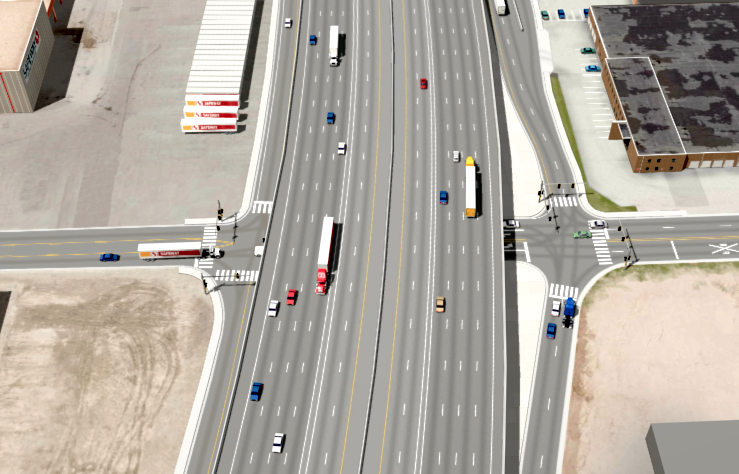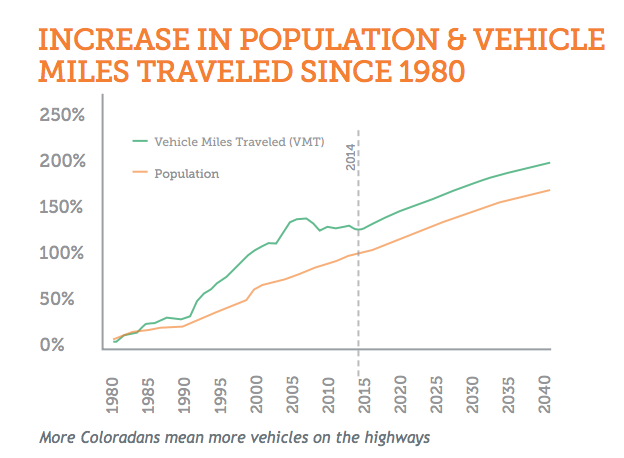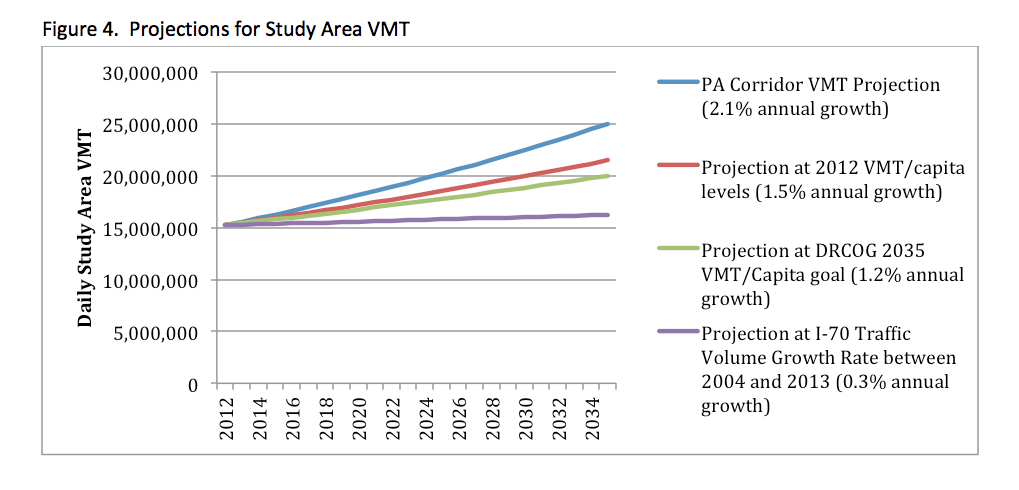CDOT Relied on Absurd Traffic Projections to Make the Case for Widening I-70

To justify widening I-70, the Colorado Department of Transportation used traffic projections that are completely out of step with the last decade of observed travel patterns in the Denver region.
CDOT wants to spend an estimated $1.8 billion widening I-70 from six lanes to 10 lanes between I-25 and Tower Road. In its draft environmental impact statement, CDOT forecast that traffic in the affected area will be 64 percent higher in 2035 than in 2012, according to a comment against the EIS by the Southwestern Energy Efficiency Project [PDF].
A 64 percent jump by 2035 would be a huge departure from recent trends. Driving mileage — or vehicle miles traveled (VMT) — in the Denver region has been essentially flat since 2006, despite growth in population. According to the Denver Regional Council of Governments’ 2012 traffic report, it’s the “longest period of non-growth in VMT since the invention of the automobile.”

With total traffic stagnating while Denver and its suburbs added hundreds of thousands of people, that means per capita driving has actually fallen.
CDOT’s misuse of traffic projections isn’t limited to the I-70 project. In its statewide transportation plan, which guides the direction of the entire agency, CDOT predicts that statewide traffic will increase 47 percent by 2040, growing in tandem with the population. But it’s been a while since that was actually the case — just look at the last 10 years in CDOT’s own graph:

In its complaint against the I-70 EIS, SWEEP made the point that CDOT’s traffic projections far exceed not only the recent trendlines, but also the region’s own targets. The blue line represents CDOT’s projection:

Of course, to a large extent, projecting higher traffic to justify a road widening becomes a self-fulfilling prophecy. Adding lanes enables more traffic to fit on the highway, leading to more car-dependent development and more driving. Even though CDOT Director Shailen Bhatt has admitted that trying to solve transportation problems by widening lanes is a wasteful 20th-century concept, the agency’s appetite for expensive road projects justified by shaky math is unabated.
CDOT’s I-70 traffic projections come from a draft EIS. The agency will have to respond to all comments on the document, including the complaints about traffic projections, in the final EIS, due out in August.


